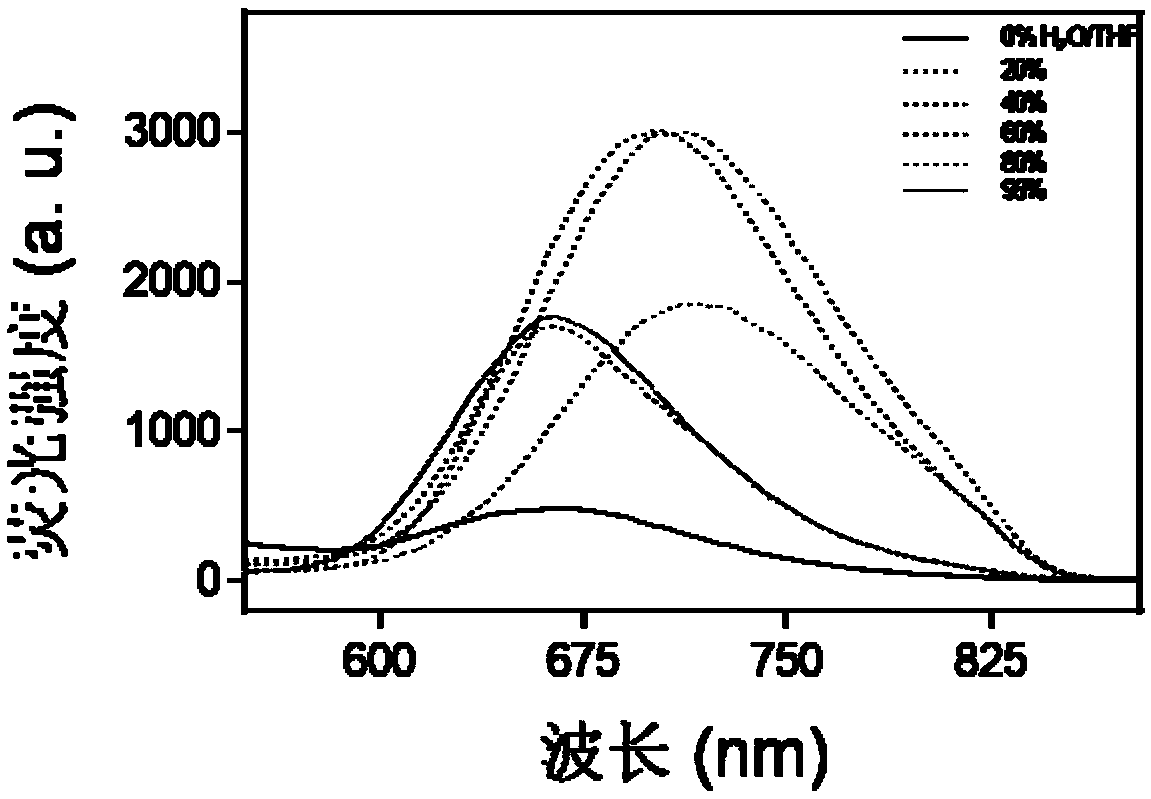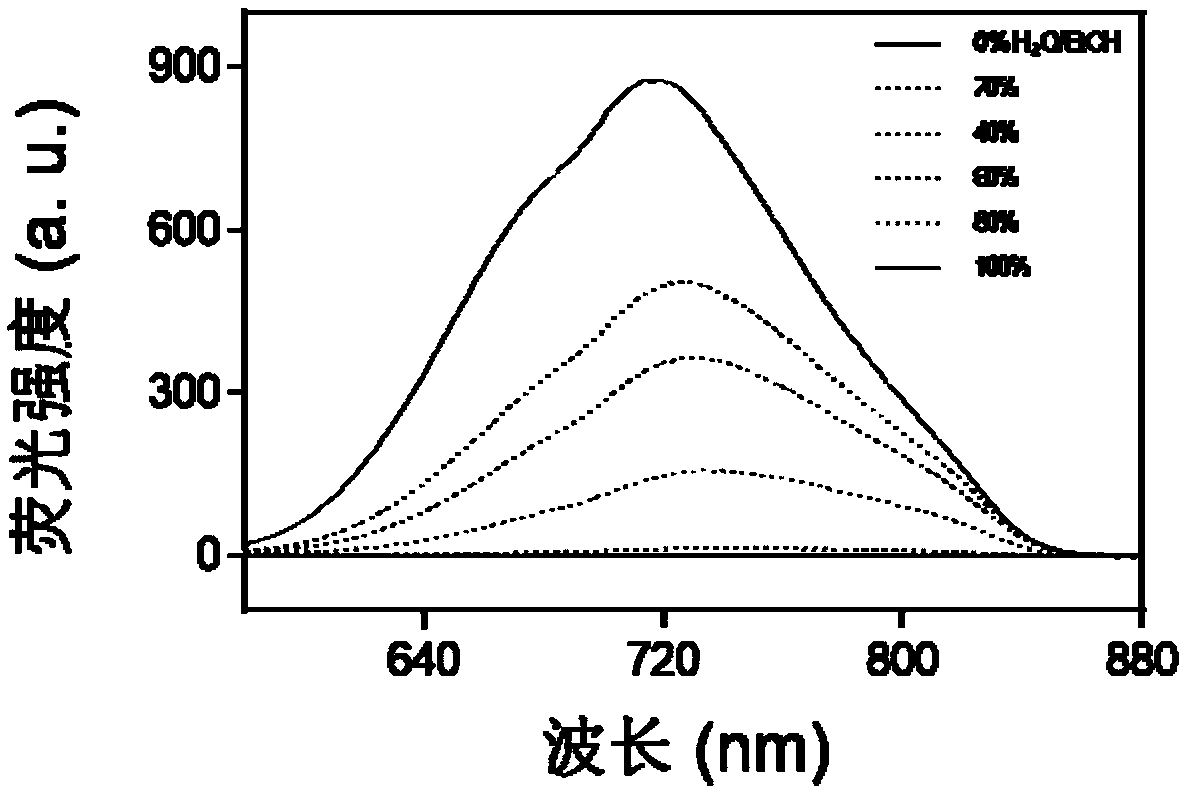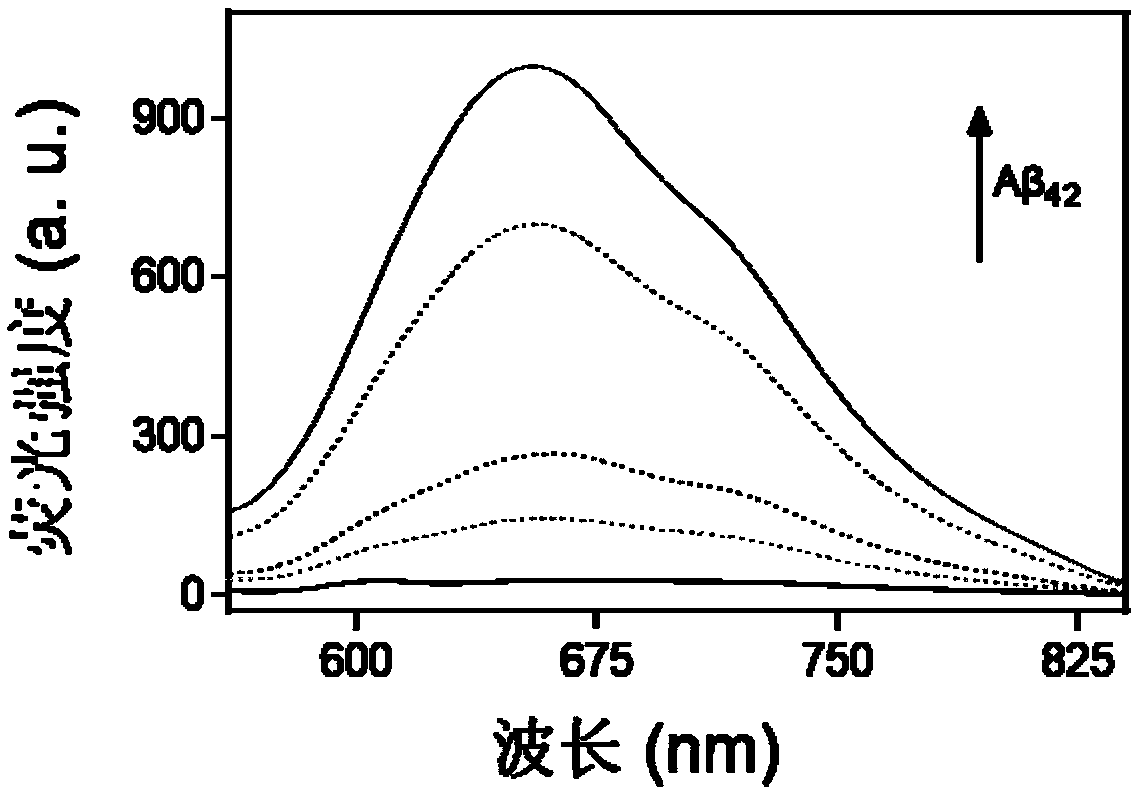Near-infrared A beta fluorescence imaging agent with high signal-noise ratio, as well as preparation method and application thereof
A high signal-to-noise ratio, fluorescence imaging technology, applied in the direction of fluorescence/phosphorescence, chemical instruments and methods, preparations for in vivo experiments, etc.
- Summary
- Abstract
- Description
- Claims
- Application Information
AI Technical Summary
Problems solved by technology
Method used
Image
Examples
Embodiment 1
[0041] (1) Synthesis of dye I-1:
[0042]
[0043] In a 100mL round-bottom flask, add 1-ethyl-2-methyl-4-(α,α-dicyano)methylene-1,4-dihydroquinoline (116.4mg, 0.50mmol), 5-(N,N-Dimethylaniline)-2-thiophenealdehyde (104mg, 0.50mmol) and 30mL of toluene were added dropwise to 0.5mL of ammonium acetate solution (2M), and reacted at 150°C for 2h under argon protection. After cooling to room temperature, the toluene was removed by rotary evaporation, and the column chromatography was separated (200-300 mesh silica gel, PE:CH 2 Cl 2 =5:2), the red solid 50mg was obtained by rotary evaporation, and the yield was 38%.
[0044] 1 H NMR(400MHz, DMSO-d 6 ,ppm)δ=1.42(t,J=8.0Hz,3H,NCH 2 CH 3 -H),δ=2.97(s,6H,CH 3 -H),δ=4.54(q,J=8.0Hz,2H,NCH 2 CH 3 -H),δ=6.77(d,J=8.0Hz,2H,Ph-H),δ=7.03(s,1H,Ph-H),δ=7.07(d,J=16Hz,1H,alkene-H ),δ=7.38(d,J=4.0Hz,1H,Ph-H),δ=7.54(d,2H,J=4.0Hz,thiophene-H),δ=7.57(s,1H,Ph-H) ,7.62(t,J=8.0Hz,1H,Ph-H),δ=7.66(d,J=16Hz,1H,alkene-H),7.93(t,J=4.0Hz,1H,Ph-H), δ = 8.09 (d, J ...
Embodiment 2
[0052] The absorption and fluorescence spectra of dye I-2 in the aggregate state
[0053] Take the dye I-2 prepared in Example 1 and dissolve it in analytically pure dimethyl sulfoxide to make 1.0×10 -3 M stock solution. Then prepare EtOH / H with 95% ethanol (EtOH) 2 O mixed solvent 2mL. Take 20μL of the above stock solution and add it to the prepared EtOH / H 2 In the O mixed solvent, mix evenly and transfer to an optical quartz cuvette (10×10mm) to test its fluorescence spectrum. Such as figure 2 As shown, with 500nm as the excitation wavelength, the maximum emission peak of dye 1-2 is located at about 720nm in the near-infrared region, and the Stokes shift reaches 200nm; and the aggregation of dye 1-2 in the mixed solvent leads to its fluorescence enhancement, which has Typical concentrated fluorescence enhancement characteristics.
Embodiment 3
[0055] Dye I-2 to Aβ 42 Fiber's spectral response
[0056] Take the dye I-2 prepared in Example 1 and dissolve it in analytically pure dimethyl sulfoxide to make 1.0×10 -3 M stock solution. Then prepare 2.91 mL of PBS buffer. Take 3μL of the above stock solution and add it to the prepared PBS buffer, then add 90μL Aβ 42 Fiber storage solution (1×10 -4 M). The mixed solution was incubated at 37°C for 30 minutes, mixed evenly, and transferred to an optical quartz cuvette (10×10 mm) to test its absorption and fluorescence spectra. Such as Figure 4 As shown, Aβ is not added 42 When fiber, dye I-2 basically has no fluorescence signal; when adding Aβ 42 After fiber, using 500nm as the excitation wavelength, the maximum emission peak appears at 660nm in the near-infrared region, and the fluorescence intensity increases by about 50 times, showing an extremely high signal-to-noise ratio.
PUM
 Login to View More
Login to View More Abstract
Description
Claims
Application Information
 Login to View More
Login to View More - R&D
- Intellectual Property
- Life Sciences
- Materials
- Tech Scout
- Unparalleled Data Quality
- Higher Quality Content
- 60% Fewer Hallucinations
Browse by: Latest US Patents, China's latest patents, Technical Efficacy Thesaurus, Application Domain, Technology Topic, Popular Technical Reports.
© 2025 PatSnap. All rights reserved.Legal|Privacy policy|Modern Slavery Act Transparency Statement|Sitemap|About US| Contact US: help@patsnap.com



